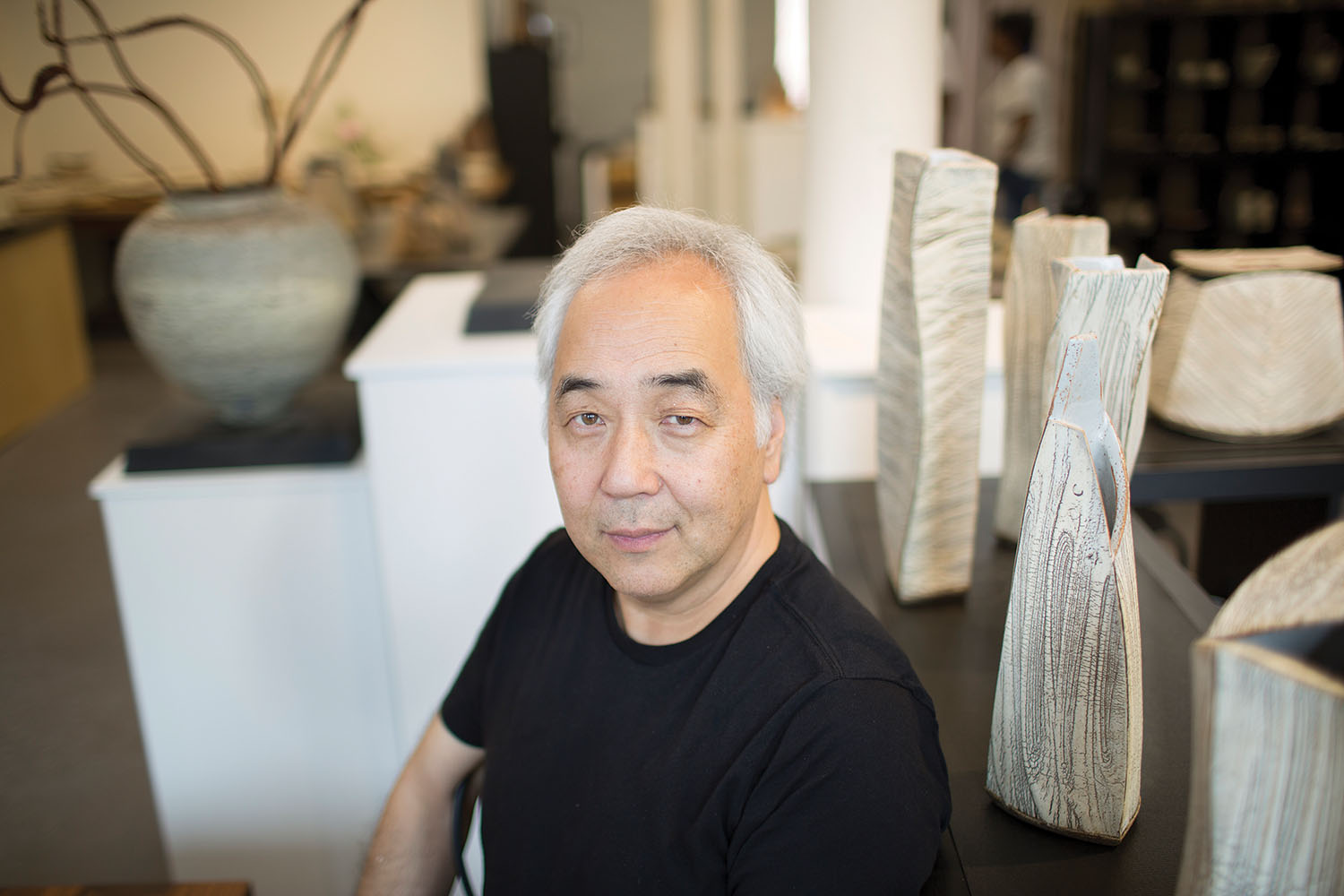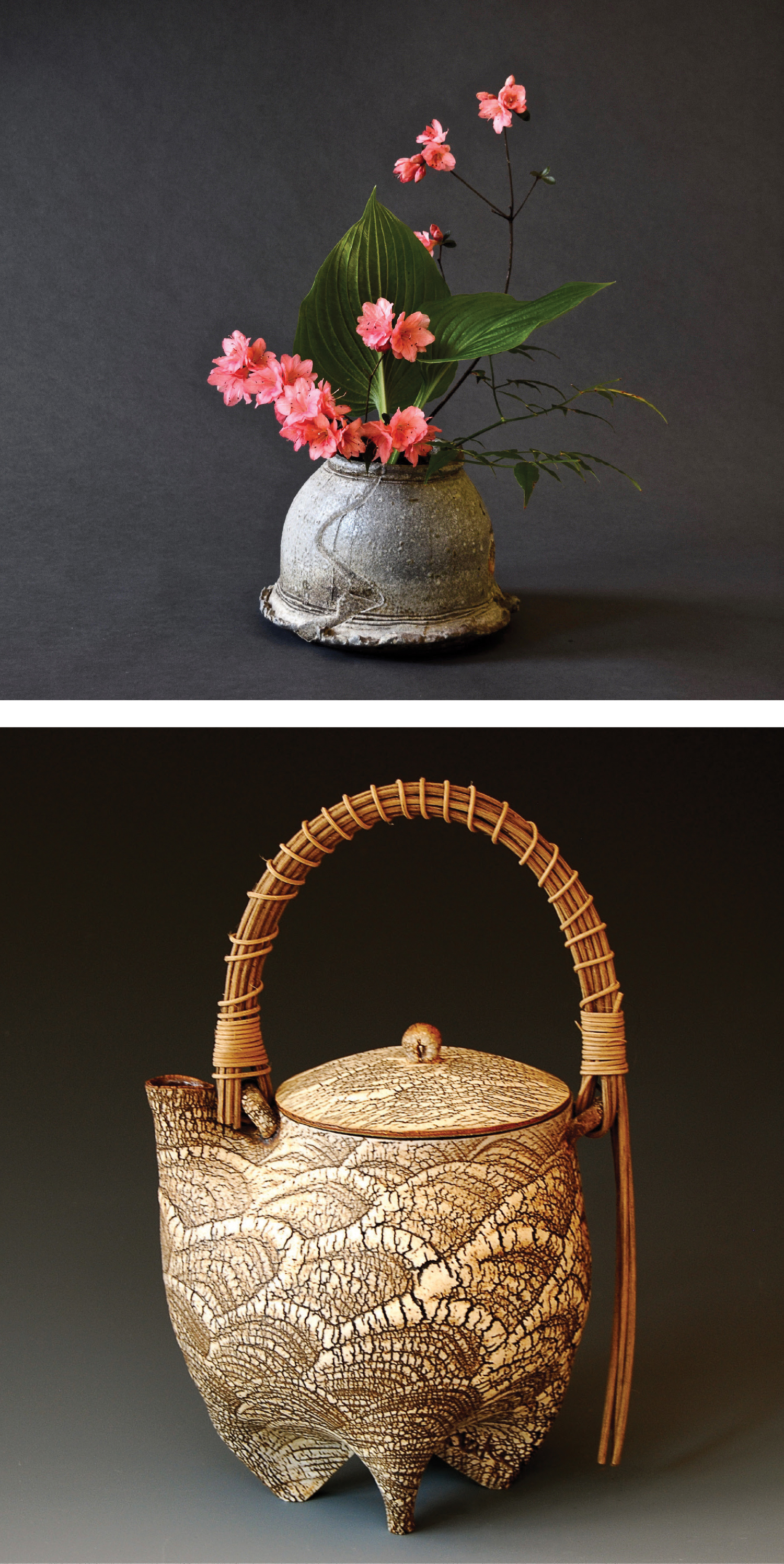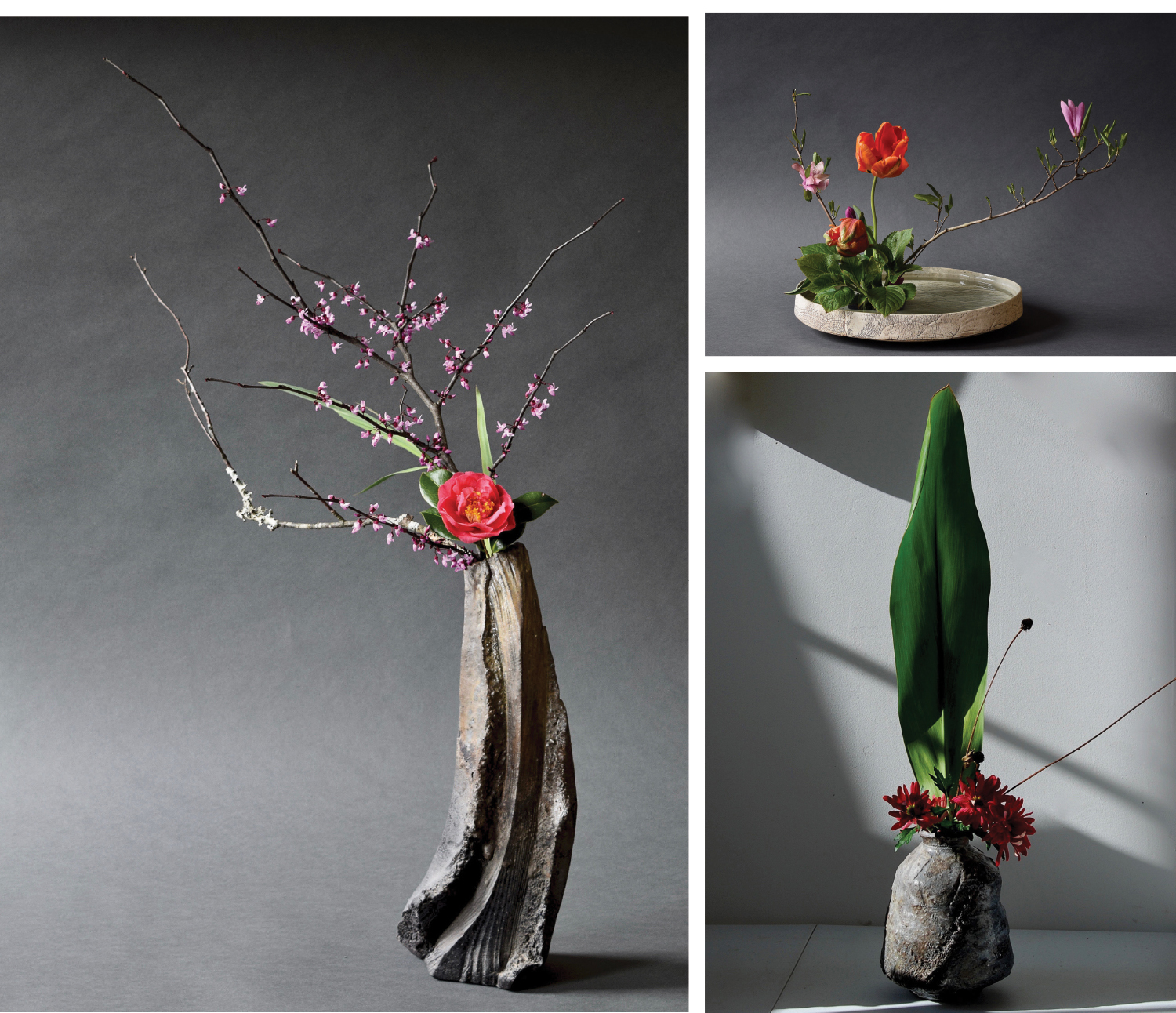
Portrait by Matt Rose
Nothing evokes timelessness more than plain dirt, sculpted by the heat, rain, and wind of countless millennia into the foundation of everything that grows. And so it’s only natural that, 18 years ago, Asheville ceramics artist Akira Satake turned to pottery to reconnect with the earth’s gifts during stressful times.
Back then, he was a producer who ran Alula Records in New York City. Today, he’s created a respected body of work in wood-fired pieces drawn from the traditional forms of his native Japan. “Developing the shapes, and the firing, are equally attractive to me,” Satake says. “Both are spontaneous and full of serendipity. Every different clay has its own personality, and how they act suggests to me how I should react. It’s like playing music with another player.”
Born in Osaka, he was raised in the arts by his father, a painter who collected ceramics as a hobby. Satake pursued a career in photography and as a musician before moving to the United States in 1983 to expand his opportunities in both fields. He still plays two closely related instruments, the banjo and the Japanese shamisen, which share a common ancestry. Both originated in Gambia, but “the shamisen evolved on the Silk Road to Japan, and the banjo was brought to America by enslaved Africans,” he explains. (Satake still appears frequently in solo performances and occasionally in concert with singer Anya Hinkle and violinist Duncan Wickel.)

But the stress of the music business needed a hands-on outlet. Making pottery provided the peace and focus that had gone missing. “I studied the fundamental techniques for about six months or so, like how to pinch pots and how to throw pots on the wheel,” he says. “Then I took off on my own.” Satake set up his first pottery studio in Brooklyn, in rented space shared with several other potters, before moving to the Asheville area 15 years ago. Now, he works from his studio housed at Gallery Mugen in the River Arts District, where visitors can also sample the coffee, tea, and pastries offered by Cafè Yuzu, housed within the gallery and created by his wife Cynthia, a pastry chef. (Satake is also a member of the Southern Highland Craft Guild.)
About a quarter of Satake’s creations are vases used in ikebana, the centuries-old floral art form of Japan. He’s a student of the oldest school of ikebana design, the Ikenobo. (The name is said to be a combination of the words for “pond,” ike, and “hut,” bo, to commemorate the hut-dwelling Buddhist monks who first created floral arrangements for an 8th-century pond-side temple.)
The traditional wide-mouthed vessels are the earliest forms. But Satake also fashions vases with a small opening for a single stem or branch, saucer-like and bottle shapes, and asymmetrical pieces. A leader of the genre, he’ll curate a show, Floating Islands: Contemporary Ikebana Vessels, opening in Washington DC later this summer, with the Japanese Embassy and Ikebana International among the sponsoring organizations.

Using clay often locally sourced and unprocessed —“wild clay,” he calls it — he fires each piece for days in a kiln he built with the help of master ceramics artist Nobuhiro Mizuma, a close friend and a major influence on his own firing technique, along with fellow North Carolina ceramicist Judith Duff. All of Satake’s wood-fired work bears a natural ash glaze, formed during the long firing process. Whether it’s pine, oak, or applewood, “each wood yields different colors and forms a different ash,” says Satake. Ochers, reds, oranges, and grays are stippled with the flakes of ash, textured as if shaped by the wind and water from which the clay also sprung.
“The fire is the ultimate random part of the equation,” he says. “I hope it will be my ally, but it always transforms the clay in ways I cannot anticipate.”
Akira Satake, Gallery Mugen, 191 Lyman St. Studio 165, in the River Arts District (Riverview Station). For more information, see 828-275-7612 or visit gallerymugen.com or akirasatake.com. Floating Islands: Contemporary Ikebana Vessels opens August 24 at the Japanese Information and Cultural Center in Washington DC before moving to the city’s District Clay Gallery (districtclaygallery.com), where it will be on view through November 2.
